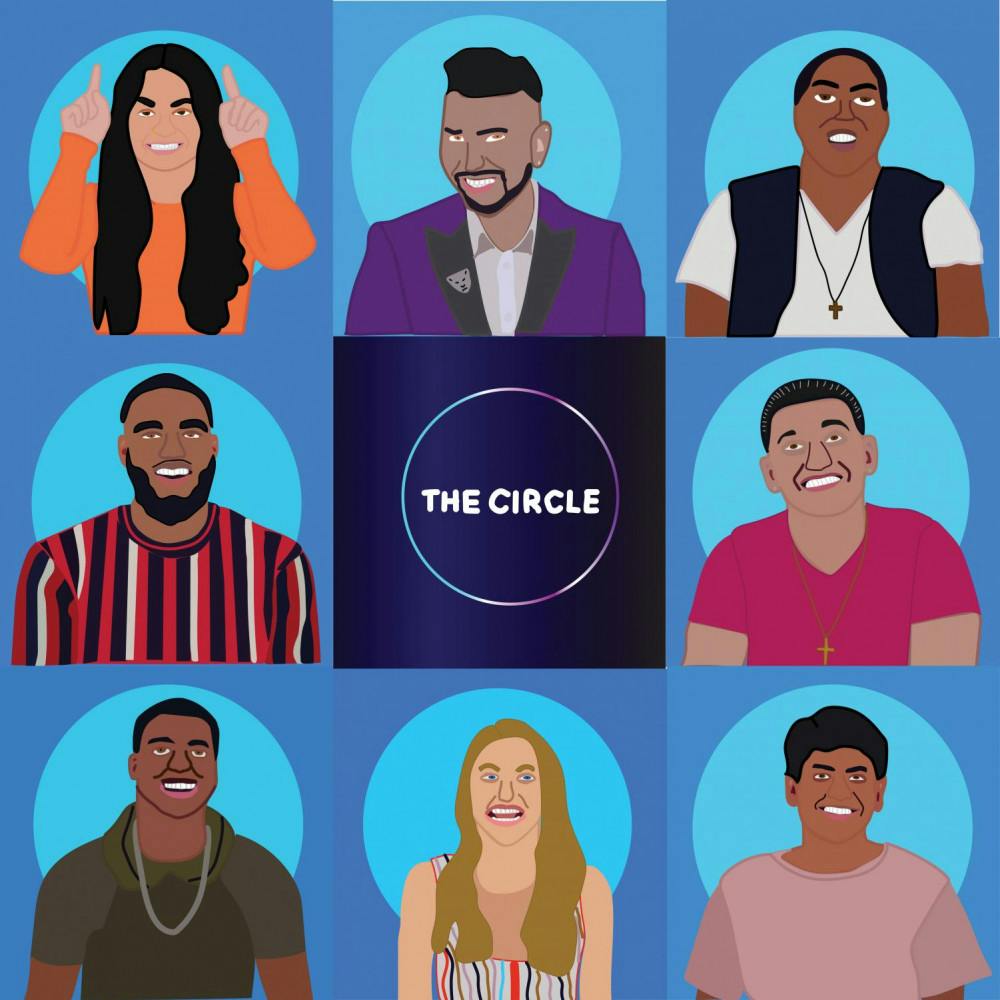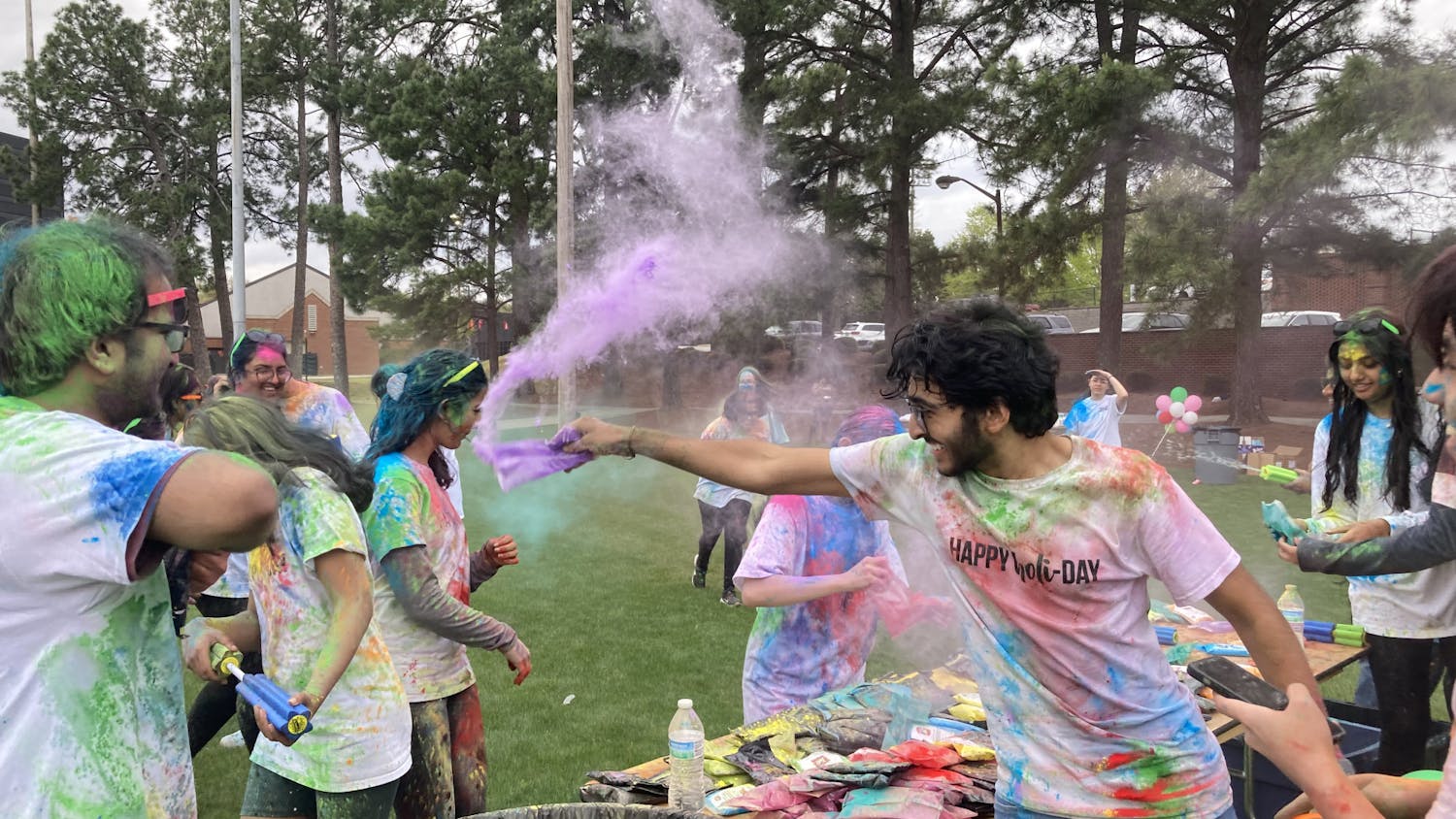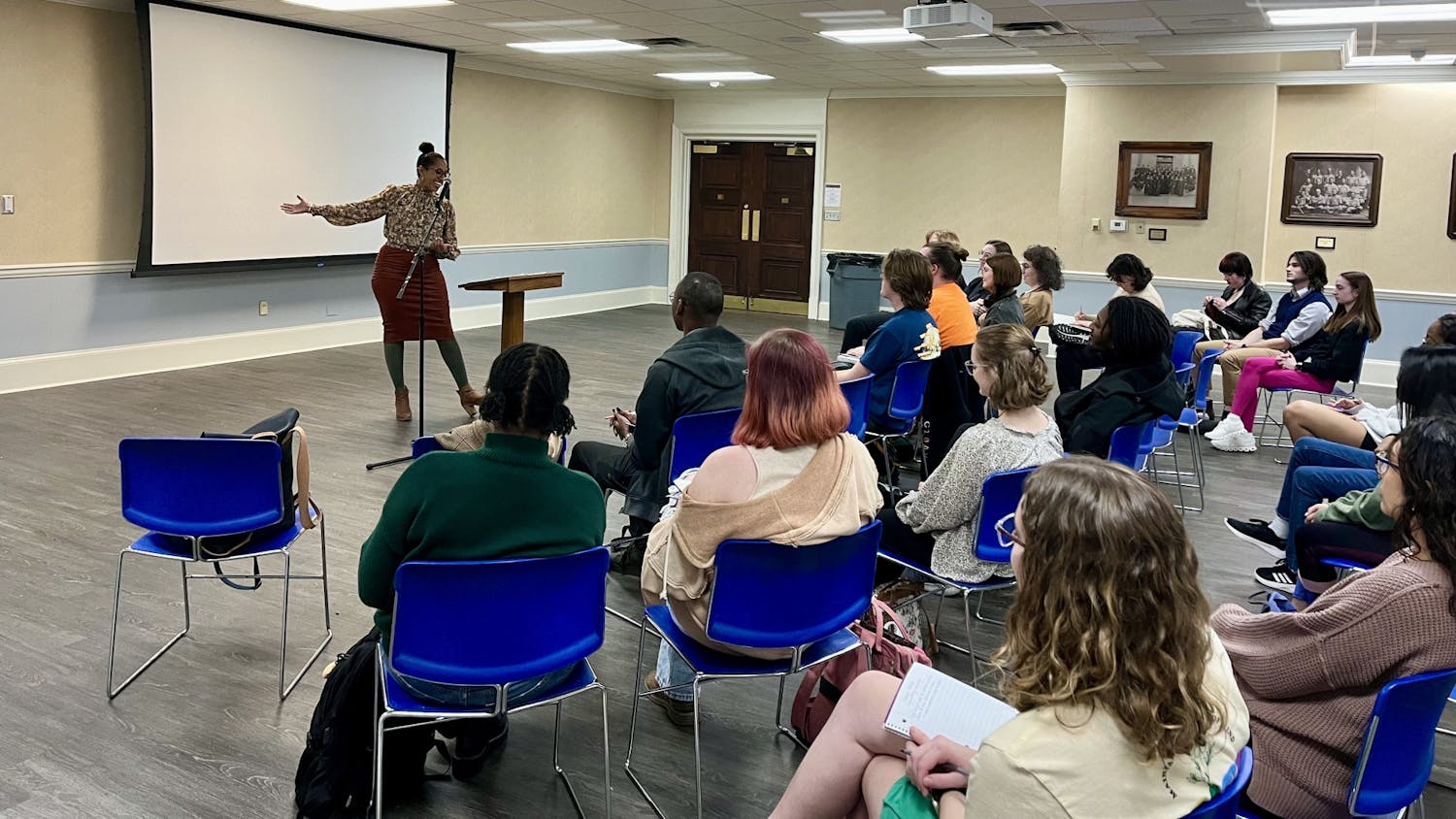I loved “The Circle” — there, I said it.
I’ve never enjoyed a reality show in my life. I couldn’t understand why people would scream at their TVs, follow celebs on social media or live-tweet their reactions to something like “The Bachelor.” But when I started “The Circle,” it made plenty of sense. I finished all 12 episodes in two days, and I’m only a little bit ashamed to admit it.
“The Circle” is Netflix’s take on a U.K. show of the same name that aired in 2017. The U.S. version dropped in two installments: the first half on Jan. 1, 2020, and the rest on Jan. 15.
The premise is simple. Eight players live in complete isolation in customized apartments, all in one building, for 15 days. The only contact anyone has with other players is through the show’s voice-to-text social media app, Circle. They convene in Circle’s chat rooms for conversations and challenges several times a day and create additional chats with smaller groups or individual players.
At the end of each day, players rank their competitors from favorite to least favorite, and everyone’s rankings are tallied by Circle. The top two overall become “Influencers” for 24 hours. They have the power to collaborate on which player to “Block”—meaning, to send home from the game. The highest-ranked person at the show’s end wins a $100,000 prize.
What makes “The Circle” interesting is that players can “catfish,” or play as someone other than themselves. Since other players only see photos and never hear anyone’s voice, several choose to play as people they know—or people they wish they could be. In the first episode, lovable Seaburn Williams admits that he will be playing as his girlfriend, Rebecca, and witty Karyn Blanco plays as “Mercedeze,” a girl she made up using photos of a woman she finds attractive.
The aspect of the catfishing that reeled me in was each player’s motivations for doing it (or not doing it). Seaburn plays as Rebecca for a strategic purpose. He says most people would favor a girl on social media over a guy. Karyn plays Mercedeze because she doesn’t want players to judge the real Karyn, a 37-year-old butch lesbian, before talking to her. Similarly, Sean Taylor, a plus-size model, plays as a thin, conventionally-attractive swimsuit model to avoid judgment for her size. After the players discover the first catfish, the new name of the game becomes exposing other potential catfish. At first glance, the show seems like it wants to warn viewers of the dangers of social media, but the players’ disdain for catfish reveals the deeper message: even online, people want to see real, authentic humans and forge connections with them.
While the catfish added an interesting dynamic, I found myself falling in love with players who weren’t afraid to show their true selves. My favorites were Samantha “Sammie” Cimarelli, a behavior technician living in Miami, Florida, and Joey Sasso, an aspiring actor from New York.
Stylish Sammie starts “The Circle” with a goal to never deviate from her real personality, and she sticks to that until the end, even as she plays into the flirting aspect of the game from time to time. She tells personal stories from her life, some of which make the whole crew cry.
[pullquote speaker="" photo="" align="left" background="off" border="none" shadow="off"]The players’ disdain for catfish reveals the deeper message: even online, people want to see real, authentic humans and forge connections with them.[/pullquote]
I’m still shocked that I ended up liking Joey. He’s the most “bro” of all bros, wears sunglasses inside and comes off as a womanizer at the start of the game. Before too long, though, Joey becomes genuinely invested in making true friendships through Circle, and his quest for authenticity applies not just to other players, but to himself as well.
Of course, there were also players I didn’t like. Alex Lake, 32, signs up as stereotypical surfer dude “Adam,” a twenty-something male model with bulging muscles and a cool-guy attitude. Alex admits that he wants to play as Adam because the true Alex wouldn’t be accepted—he’s a cat-obsessed artist who wears floral-patterned overalls, eats homemade pudding straight out of the blender and talks about pretty much nothing but his wife Gina. His thinly-veiled insecurity manifests as distrust for almost everyone in the game, and he’s quick to judge. While trying to play Adam, he can also be rude and misogynistic, and he makes some women uncomfortable.
Alex’s attempt to act like a beach bro is just one example of the intense gender performance that the anonymity of “The Circle” brings out in players. Most of the women flirt their way through the game and load their profiles with bikini pics, while most of the men rely on hegemonic standards of masculinity by using photos showing athleticism.
Gendered conversations seem forced at times; the first woman-only group chat is called “Skinny Girls Chat,” and they either talk about boys or their periods, while the guys usually talk about the gym and hot girls. They even have a virtual push-up competition in one episode.
Sexuality also comes into play in the contrived world of “The Circle.” Sammie, Karyn and drag queen Chris Sapphire openly identify on the LGBTQ+ spectrum, but several players indicate at some point that they could be attracted to more than one gender—whether or not it’s true—to expand their flirting options when they think it would help them get ahead.
A straight person masquerading as someone of a marginalized sexuality diminishes the struggles that LGBTQ+ folks experience, and it doesn’t sit right with me that some people alluded to membership in an oppressed group they didn’t actually belong to as a means to make a profit.
“The Circle” also offers commentary on beauty standards online. Most of the players have average to athletic builds, with the exception of Sean. She says that her goal with coming on the show was to empower plus-size women, but she chooses to play using photos of an ultra-thin friend who looks like she just walked off the Victoria’s Secret Fashion Show stage.
That’s not empowering; it’s performative. It reinforces rather than challenges the notion that thinness is the modern beauty ideal by suggesting that fat bodies should hide themselves so thin bodies can bask in the spotlight.
Despite some of the negative tropes, I got so wrapped up in “The Circle” that I caught myself holding my breath when the “Blocked” players were announced, and I definitely yelled at the screen about the many twists in the game.
And yes—when I finished the show, I followed (almost) the entire cast on Instagram.
Review: ‘The Circle’ sparks conversations about gender, sexuality and identity online





